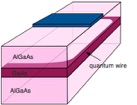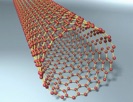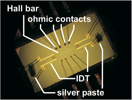

Fabrizio Dolcini

Interaction in low-dimensional electron systems
In condensed matter physics there are various examples of systems where quantum mechanical effects cause electrons to effectively move along one-dimensional channels. This is the case for instance in
-semiconductor quantum wires
-carbon nanotubes
-edge states of Fractional Quantum Hall Effect bars
-edge states of Topological Insulators quantum wells
What is so special about one-dimension ?
It’s the fact that in one-dimension (1D) electron-electron interaction leads to quite different effects with respect to the ‘traditional’ 3D behavior. Indeed interaction in 3D systems causes electrons to behave as quasi-particles, i.e. as independent particles where the typical parameters are renormalized by the interaction though with respect to the actual non-interacting case. This effect is well described by the Fermi Liquid Theory. Roughly speaking one can say that in 3D interactions lead to quantitative but not qualitative changes with respect to non-interacting systems.
In contrast, in 1D the usual Fermi liquid theory breaks down, since electronic correlations are so strong that they destroy the 3D independent particle picture. In 1D there is simply no room for one electron to tackle the other ones, so that any small interaction always gives rise to a collective excitation.
The eigenstates of a 1D interacting electron system are thus intrinsically correlated; this represents a major qualitative difference with respect to the non interacting case, which leads to spectacular effects such as spin-charge separation, charge fractionalization and non linear current voltage characteristics in transport properties.
This type of behavior is well described by the Luttinger Liquid Theory.

In 3D systems any electron, although interacting with the other electrons, always has room to tackle them.

In 1D systems, any weak interaction always causes a collective motion of all electrons, due to ‘lack of room’.








